- Get link
- X
- Other Apps
- Get link
- X
- Other Apps

Most scientific discoveries are the result of a painstaking, purposeful and insanely complex work, the goal of which is reduced to a single task - to make a breakthrough in this or that sphere. However, history is full of cases when incredible discoveries were made by a scientist when their gaze was directed in the opposite direction.
Sometimes very significant discoveries occur in a completely random way. Take at least the development of the drug in order to improve blood flow in the myocardium and the treatment of angina pectoris and coronary heart disease. For the heart this medicine, as shown by clinical trials, turned out to be almost useless, but so on came sildenafil, better known now as Viagra. The discovery of the same saccharin, an artificial substitute for sugar, was the result of the fatigue, and perhaps the simple forgetfulness of the Russian chemistry professor, to wash hands before eating.
In most cases, researchers behind such discoveries would not call them truly "random", because before that people often spent many sleepless nights and analyzed a huge mountain of scientific information - all in order to really make a discovery, although not what happened in the end.
The desire to understand how a new product works, also often contributes, as it was with the inventor of a special substance intended for cleaning walls from soot. Just a simple curiosity and a desire to change one ingredient to another embodied in a very interesting and very lucrative invention - plasticine.
It should also be understood that none of the "random" inventions that have changed this world would be possible without the presence of someone who could see the potential and value of the discovery in a timely manner. And yet history shows that the best innovations can come to this world at the most unexpected moment.
Microwave

The engineer of the company "Raytheon" Percy Spencer, engaged in the manufacture of equipment for radars, in 1945 made one of the most important discoveries for this world. He found that microwave radiation can heat objects. Legends of how he found out, there are several. According to one of them, one day he casually left a chocolate bar in his pocket and started working with the magnetron, and after a few minutes, with surprise, he felt how the chocolate in his pocket began to melt. Trying to find out what's wrong, Spencer decided to experiment with other products: eggs and corn kernels. From what he saw, he concluded that the cause of the observed is microwave radiation.
Whatever it was, in 1946 Spencer received a patent for the first microwave oven. The first microwave "Radarange" was released in 1947 by the same firm in which he worked. But it was not intended to heat food, but for quick defrosting of food and was used exclusively by the military. Its height was 168 centimeters, weight - 340 kg, and power - 3 kW, which is about twice the power of modern household microwave ovens. The microwave for the military cost 3000 dollars. In 1965, her household version came out, which was sold for $ 500.
Quinine
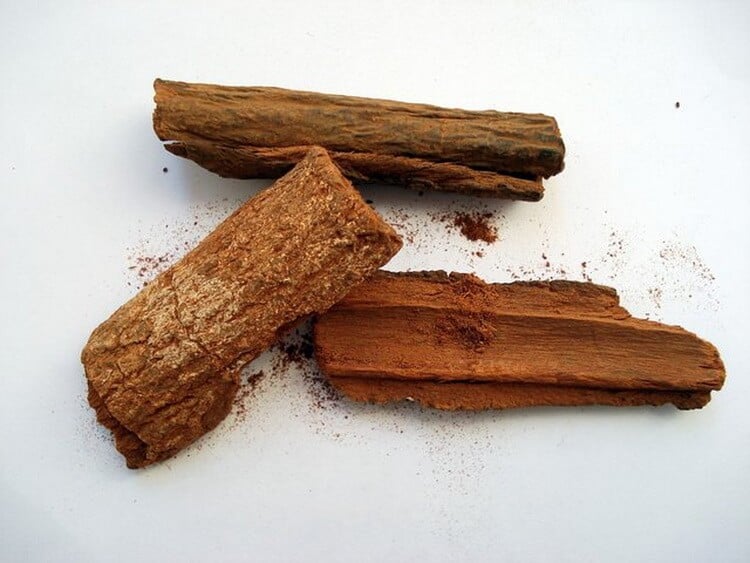
For a long time quinine was used as the main treatment for malaria. Now it can still be found as one of the components of medicines against malaria, and also as an additive to various tonic drinks.
Jesuit missionaries used quinine since the early 1600s, discovering it in South America and bringing it to Europe later, but according to one legend, the use of this substance for the treatment of diseases was practiced by representatives of Andean civilizations even earlier, and the discovery of quinine, and in particular its properties , is often associated with a case of luck.
One legend tells of a Andean resident who was lost in the jungle and caught a malarial fever. Quite exhausted from thirst, he drank water from the puddle, which was at the foot of the cinchona. The bitter taste of water at first frightened a man. He thought that he had drunk something, which would further aggravate his condition. But, fortunately, it all happened quite the contrary. After a while his fever receded, a man could find his way home and share a story about an amazing tree.
This story is not as well documented as the same official version of the missionary Bernabe Kobo, who brought quinine from Europe to Europe and cured the viceroy's wife of Peru, but we simply could not ignore the interesting legend of luck that later changed this world .
X-ray radiation
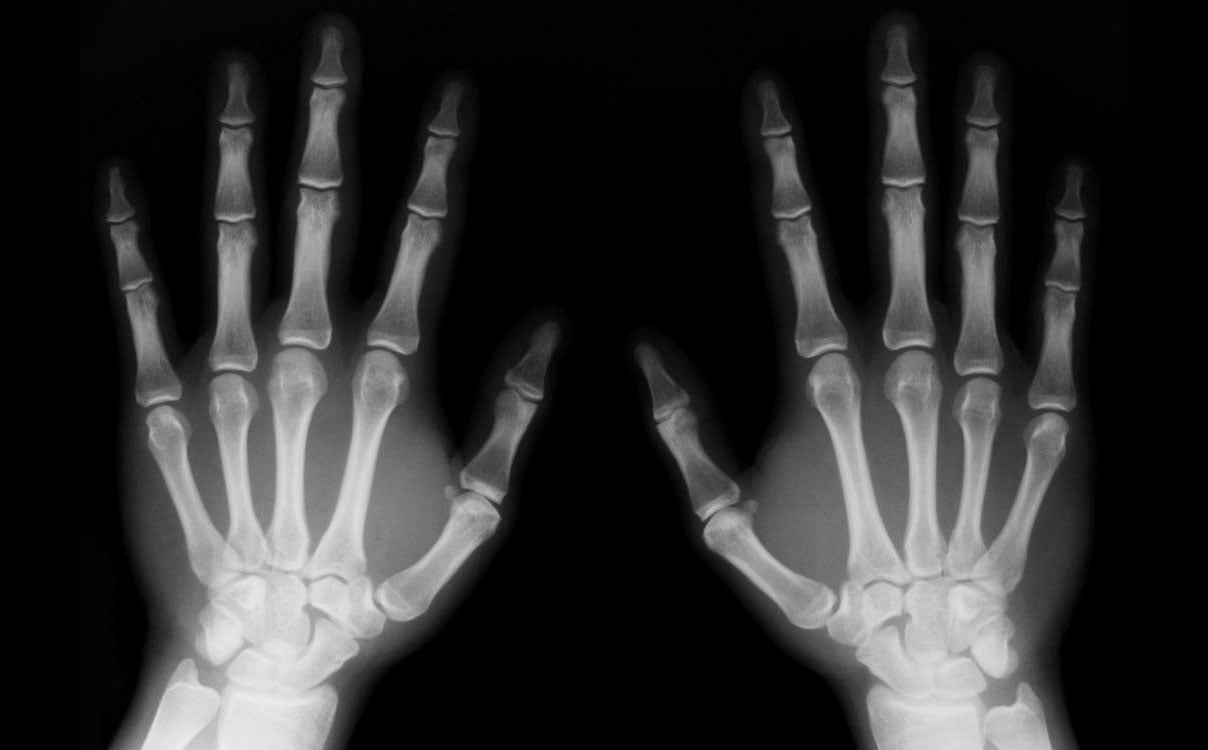
In 1895 the German physicist Wilhelm Roentgen worked with a cathode-ray tube. Despite the fact that the tube itself was shielded, Roentgen noticed that the cardboard, covered with platinum-barium barium and located next to the tube, began to glow in a dark room.
X-rays tried to block the rays, but most of the things that he put in front of them had a similar effect. When he finally put his hand in front of the tube, he noticed that it begins to appear through the image projected on the screen. He called his discovery "X-rays" (X-rays). After Roentgen replaced the tube with a photographic plate and received the first X-ray.
Shortly thereafter, the technology was adapted by medical institutions and research laboratories. However, the danger of long-term exposure to X-rays scientists still had to understand.
Radioactivity

Radioactivity was discovered in 1896 by the French physicist A. Becquerel. He studied the connection of luminescence and recently discovered x-rays.
Becquerel decided to find out if any luminescence is accompanied by X-rays? To test his guess, he took several compounds, including one of the uranium salts, phosphorescent yellow-green light. Lighting it with sunlight, he wrapped the salt in black paper and put it in a dark closet on a photographic plate, also wrapped in black paper. After a while, having shown a plate, Becquerel really saw the image of a piece of salt. But the fluorescent radiation could not pass through the black paper, and only X-rays could under these conditions light the plate.
After several similar experiments using uranium salt, he realized that new rays were opening, passing through opaque objects, but not x-ray ones.
Becquerel ascertained that the radiation intensity is determined only by the amount of uranium and is completely independent of which compounds it enters. Thus, this property was inherent not in the compounds, but in the chemical element-uranium.
Velcro fasteners

In 1941 the Swiss engineer Georges de Mestral decided to take a walk in the Alps with his dog. On his return home, as usual, he began to clean the animal's hair from the heads of the thistles. But this time I decided to see how they look under the microscope. As it turned out, there were tiny hooks on each head, with the help of which they clung to the animal's fur and clothes.
The engineer did not plan to come up with a new system of fasteners, but when he saw how simple and tightly hooked the hooks to the fabric and wool, he still could not resist the temptation. Through years of trial and error, he realized that the most suitable material for making Velcro is nylon.
Velcro fasteners became very popular soon after the technology was adapted by NASA's aerospace agency. Later velcro began to be widely used in the production of casual wear and footwear.
Saccharin
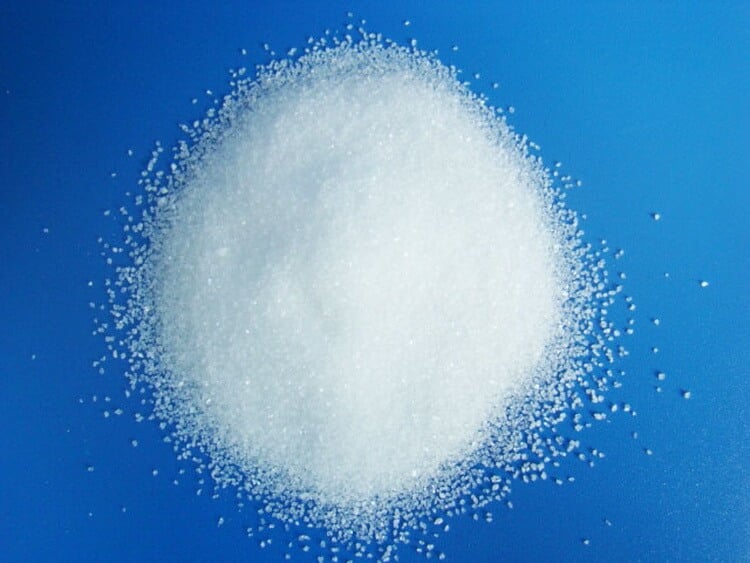
Saccharin is an artificial sweetener, about 400 times sweeter than sugar. It was opened in 1878 by a German chemist of Russian origin Konstantin Falberg at the Johns Hopkins University. Falberg and his leader, American professor Aira Ramsen, conducted research on bitumen derivatives (coal tar).
After a long day in the laboratory, Fallburg forgot to wash his hands before supper. Taking a bread in his hand and biting off a piece, the scientist noticed that he has a sweet taste, as, indeed, all the rest of the food to which he touched hands.
He returned to the laboratory and began to experiment on mixing various components until he finally found that when a combination of ortho-sulfobenzoic acid with phosphorous chloride and ammonia, a substance with a sweetish flavor was obtained (it should be noted that the practice of trying random chemicals to taste is not typical for scientists).
Fallberg patented the chemical formula of saccharin in 1884 (without writing to the patent holder Remsen, despite the fact that they had published the first scientific article on this discovery together before). Artificial sweetener was widely spread during the First World War, when the world's supplies and supplies of sugar were limited.
Tests of the substance showed that it is not absorbed by the body and is not caloric. In 1907, saccharin as a substitute for sugar began to be taken by diabetics as a diabetic sweetener, which does not contain sugar.
Implantable pacemaker

In 1956, American engineer and inventor Wilson Graybatch worked on developing a device that records heart rate. Stretching into the box behind the resistor, which was supposed to complete the outline of the circuit, he got the wrong one - the resistor turned out to be larger.
However, by installing this resistor, the engineer found that the circuit emits electrical pulsations. The frequency of pulsations pushed him to the idea of a heart rhythm. Greatbatch has become fired by the desire to create a compact implantable pacemaker. It remained only to come up with a way how to reduce the size of the stimulator so that it could work.
Two years later he presented the first implantable pacemaker, giving artificial impulses to stimulate the heart. The device was implanted in the dog. This patented innovation led to the beginning of production and the further development of pacemakers.
LSD

LSD-25 was first synthesized by the Swiss chemist Albert Hoffman in 1938, who conducted a study of lysergic acid, produced by the poisonous fungus ergot, parasitizing on some cereals. The studied chemicals Hofmann is planned to use in pharmaceuticals. And, by the way, many of their derivatives are still used in it.
In 1943, without knowing the effect of the drug, Hoffmann accidentally absorbed some of the substance with the pads of his fingers, feeling a pronounced effect of anxiety and dizziness, which he informed his assistant.
Returning home, he lay down on the bed and "plunged into a peculiar state of intoxication, characterized by a very active game of imagination," as he wrote in his notes. Three days later, Hoffmann decided to be the first in the world to deliberately take the drug. Here's how he described his feelings after:
"I asked my laboratory assistant, who was informed about the experiment, to take me home. We went on a bicycle, because the car was not due to wartime restrictions. On the way home, my condition began to take menacing forms. Everything in my field of vision was trembling and distorted, as if in a distorted mirror. I also had a feeling that we can not budge. However, my assistant told me later that we were traveling very fast. Finally, we arrived home safe and sound, and I could hardly ask my companion to call our family doctor and ask for milk from neighbors. The dizziness and the feeling that I was losing consciousness became so strong by this time that I could not stand anymore, and I had to lie on the couch. The world around me is now even more horrendously transformed. Everything in the room was spinning, and familiar things and pieces of furniture acquired a grotesque menacing shape. All of them were in continuous motion, as if possessed by internal anxiety. A woman near the door, which I hardly recognized, brought me milk - during the evening I drank two liters. It was no longer Frau R., but rather an evil and insidious witch in a painted mask.
Even worse than these demonic transformations of the outside world, there was a change in how I perceived myself, my inner essence. Any effort of my will, any attempt to put an end to the disintegration of the outside world and the dissolution of my "I" seemed futile. A demon has taken possession of me, possessed my body, mind and soul. I jumped up and screamed, trying to get rid of him, but then I sat down and helplessly lay on the couch. The substance that I wanted to experiment with conquered me. It was a demon who contemptuously triumphed over my will. "
Plasticine
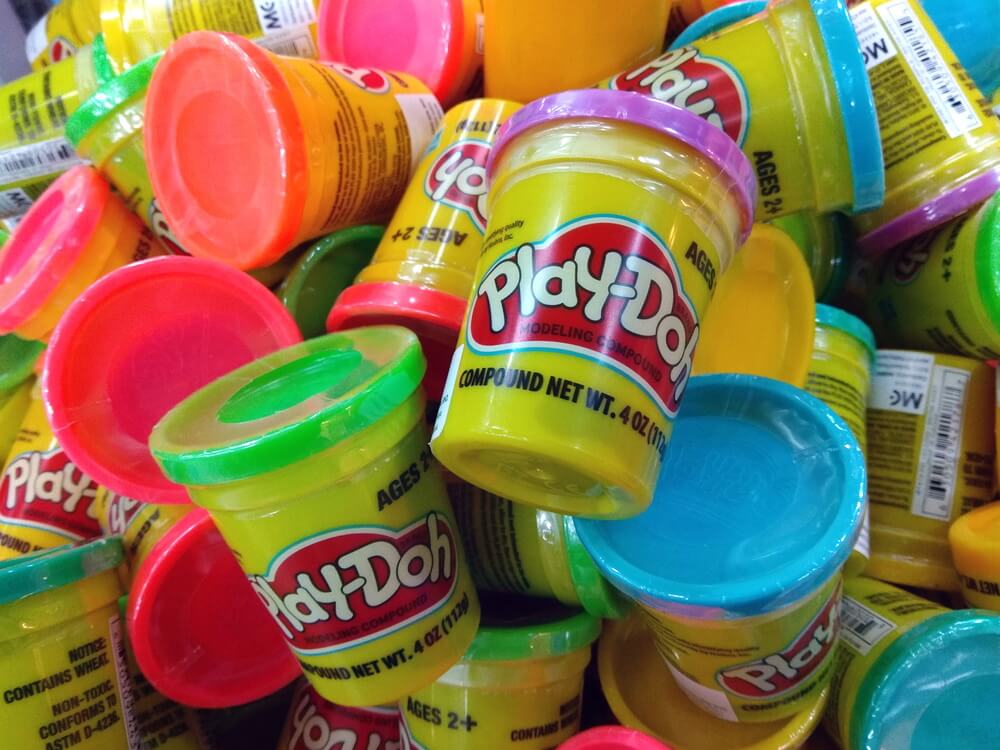
The question of who to consider an inventor of plasticine, is controversial. In Germany, they consider Franz Kolb (1880 patent), in the United Kingdom - William Harbut (patent 1899). There is another version of the creation of plasticine, according to which this substance was invented by Noah McVicker.
Sticky material was created by Noah McVicker, who at that time worked with his brother Cleo in the company Kutol, producing soap. However, the material originally made by Makverer was not intended as a toy. It was developed as a means for cleaning wallpaper.
One of the problems that had to face the holders of fireplaces, which people heated the house, was soot, settling on the walls and spoiled the wallpaper. Sticky clay promised trouble-free cleaning. However, soon the fashion included vinyl wallpaper, which could be washed with a simple sponge dipped in water, and the cleaning clay became irrelevant.
When the McVicers were about to leave the business, they received a new idea, proposed by the kindergarten teacher Kay Zufall, who noticed that the material changes shape perfectly and can be used for modeling. Through common close relatives she reported this idea to Noah McVicker. He, in turn, decided to remove the detergent from the material and added a dye to it. The original name of the new material "Kutol's Rainbow Modeling Compound" decided to replace the proposed version of Kay "plasticine".
Penicillin
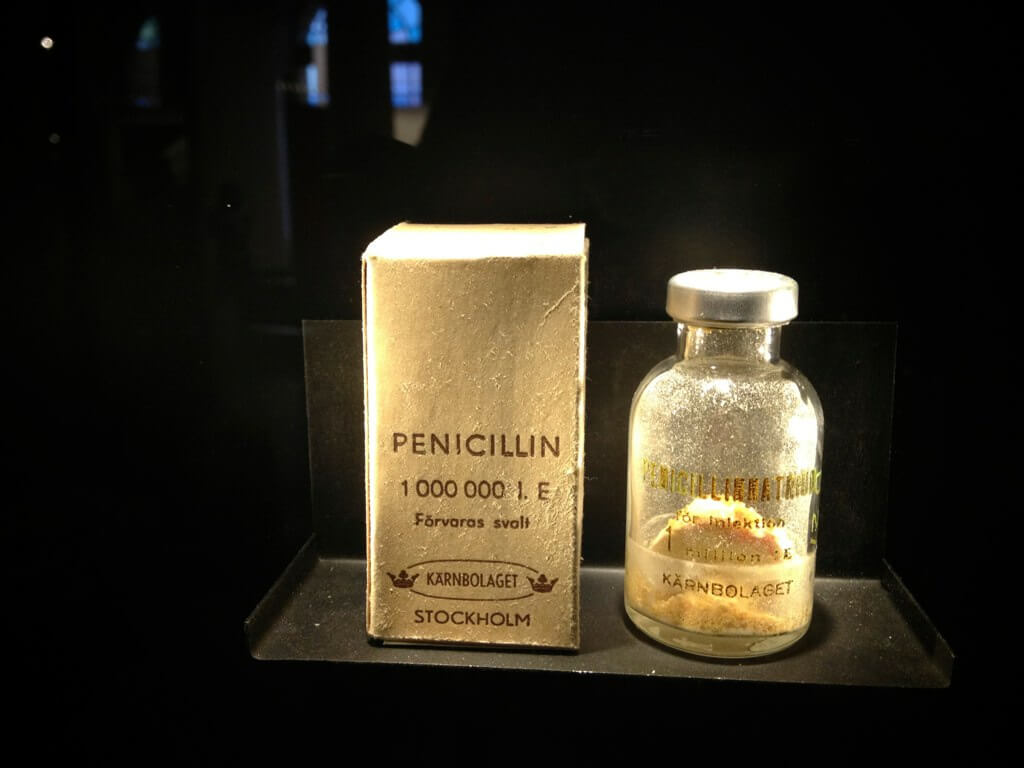
"When I woke up at dawn on September 28, 1928, I certainly did not plan a revolution in medicine by my discovery of the world's first antibiotic or killer bacterium. But I think that's what I did. "
In 1928, Sir Alexander Fleming, professor of bacteriology, returned to his laboratory after a month's rest with his family, discovered that in one of his Petri dishes appeared mold fungi that destroyed the previously existing colonies of staphylococci, but did not touch the others culture.
Fleming carried mushrooms grown on a plate with his crops to the genus Penicillium and after a few months called the excreted substance penicillin. But since Fleming was not a chemist, he was not able to extract and purify the active substance.
The scientist wrote about his discovery in 1929 in the British journal of Experimental Pathology, but his article was given little attention. Until 1940, Fleming continued his experiments, trying to develop a method for the rapid isolation of penicillin, which could be used later for more extensive use.
For the first time penicillin was used to treat a man by British scientists Howard Flory and Ernst Chein on February 2, 1941, which marked the beginning of the era of antibiotics.
Viagra

Viagra was the first drug to treat erectile dysfunction, but initially it was not developed at all for this. Its creator is the American company Pfizer, who developed the drug sildenafil, intended to treat the heart.
However, during clinical trials, it was found that the effect of the drug on cardiac blood flow is minimal, but it has a pronounced effect on the blood flow in the pelvic organs, accompanied by a longer and stronger erection in men. Even in those cases when people already did not remember when they last had it. So there was Viagra.
Additional clinical trials of Pfizer involving 4000 men with erectile dysfunction showed a similar result of the drug's effectiveness.
Insulin

The discovery, which later allowed the invention of insulin, was pure accident.
In 1889, two doctors from Strasbourg University, Oscar Minkowski and Joseph Von Mehring, trying to understand how the pancreas affects digestion, removed this organ from a healthy dog. A few days later they found that flies were gathering around the urine of the experimental dog, which turned out to be a complete surprise.
They analyzed this urine and found sugar in it. Scientists realized that his presence was associated with a pancreas removed a few days earlier, which led to the fact that the dog developed diabetes.
Nevertheless, these two scientists have not found out that the hormones produced by the pancreas regulate sugar in the blood. Это выяснили исследователи из Университета Торонто, которые в рамках экспериментов, проводившихся с 1920 по 1922 годы, смогли выделить гормон, который впоследствии получил название инсулин.
За это революционное открытие ученые из Университета Торонто были удостоены Нобелевской премии, а фармацевтическая компания Eli Lilly and Company, с одним из владельцев которой был знаком один из ученых, начала первое промышленное производство этого вещества.
Вулканизированная резина
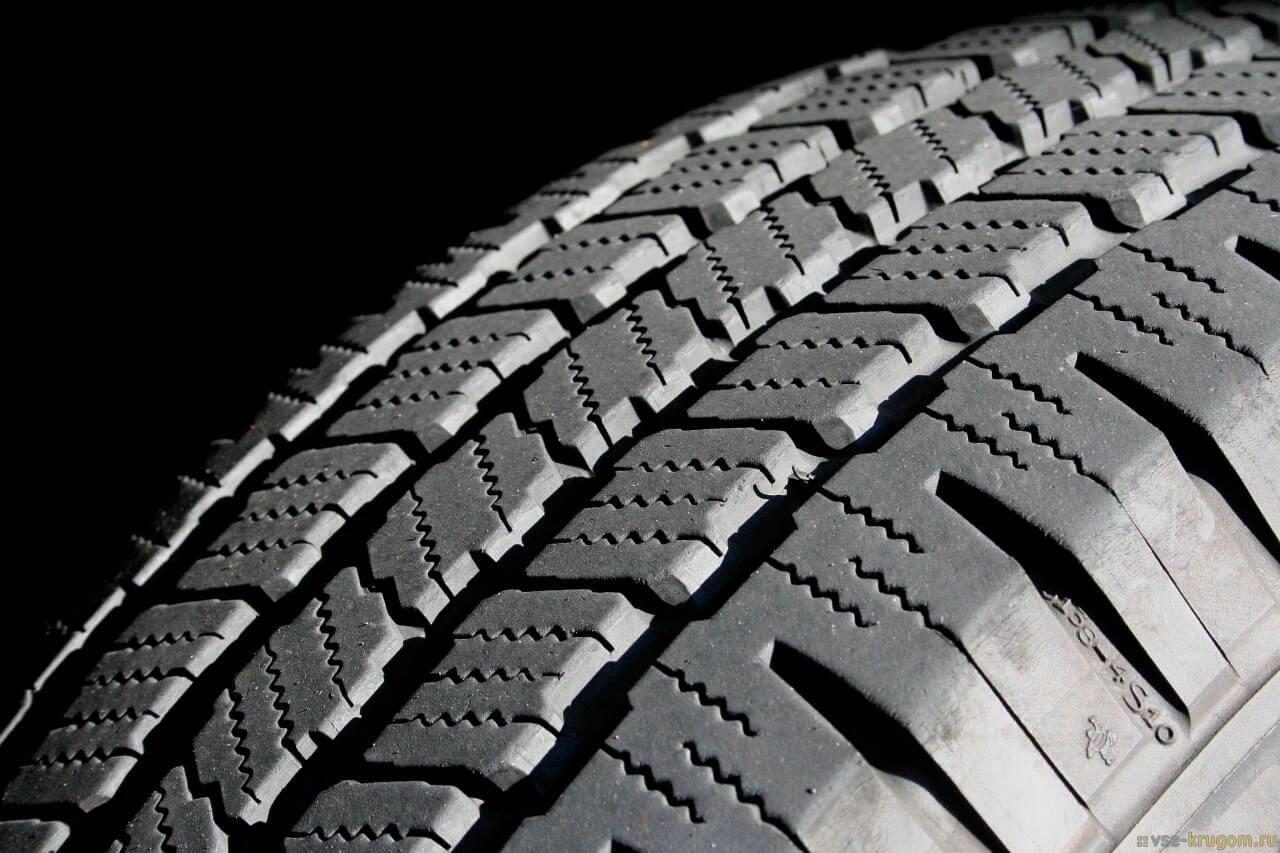
Изобретателем способа вулканизации считают американца Чарльза Гудьира, который с 1830 года пытался создать материал, способный оставаться эластичным и прочным в жару и холод.
Он обрабатывал резиновую смолу кислотой, кипятил ее в магнезии, добавлял различные вещества, однако все его изделия превращались в липкую массу в первый же жаркий день.
Открытие пришло к изобретателю случайно. В 1839 году, работая на Массачусетской резиновой фабрике, он однажды уронил на раскаленную плиту ком резины, перемешанной с серой.
Вопреки ожиданию, она не расплавилась, а, наоборот, обуглилась, словно кожа. В первом своем патенте он предложил подвергать каучук воздействию нитрита меди и царской водки. Впоследствии изобретатель обнаружил, что резина становится невосприимчивой к температурным воздействиям при добавлении серы и свинца.
После многочисленных испытаний Гудьир нашел оптимальный режим вулканизации: он смешал каучук, серу и свинцовый порошок и нагрел эту смесь до определенной температуры, в результате чего получилась резина, которая не изменяла свои свойства ни под влиянием солнечных лучей, ни под воздействием холода.
Кукурузные хлопья

История кукурузных хлопьев берет начало в XIX веке. Владельцы санатория «Батл-Крик» в штате Мичиган (США), доктор Келлог и его брат Вилл Кит Келлог готовили какое-то блюдо из кукурузной муки, но им срочно понадобилось отлучиться по неотложным делам пансиона.
Когда же они вернулись, то обнаружили, что кукурузная мука, находившаяся на строгом учете, чуть-чуть испортилась. Но они все равно решили приготовить из муки тесто, однако тесто свернулось, и получились хлопья и комки. Братья от отчаяния пожарили эти хлопья, и оказалось, что некоторые из них стали воздушными, а некоторые приобрели приятную хрустящую консистенцию.
Впоследствии эти хлопья были предложены пациентам доктора Келлога в качестве нового блюда, и подававшиеся к столу с молоком и зефиром они были очень популярны.
Добавив в хлопья сахар, Вилл Кит Келлог сделал их вкус более приемлемым для широкой аудитории.
В 1894 году оригинальные кукурузные хлопья были запатентованы американским врачом Джоном Харви Келлогом. В 1906 году Келлоги начали массовое производство нового типа пищи и основали собственную компанию.
Тефлон

Благодарить за изобретение тефлона стоит химика Роя Планкетта. В 1938 году он работал в одной из лабораторий фирмы Дюпон (DuPont) в штате Нью-Джерси. В ту пору Планкетт изучал свойства фреонов.
Однажды он под сильным давлением заморозил тетрафторэтилен, вследствие чего был получен воскообразный белый порошок, который в дальнейшем продемонстрировал удивительные свойства.
Терзаемый любопытством Планкетт провел несколько экспериментов с новым веществом и обнаружил, что порошок не только жаропрочен, но еще и имеет низкие фрикционные свойства. Через два года уже был налажен выпуск нового материала, и мир узнал его под названием «тефлон».
Суперклей
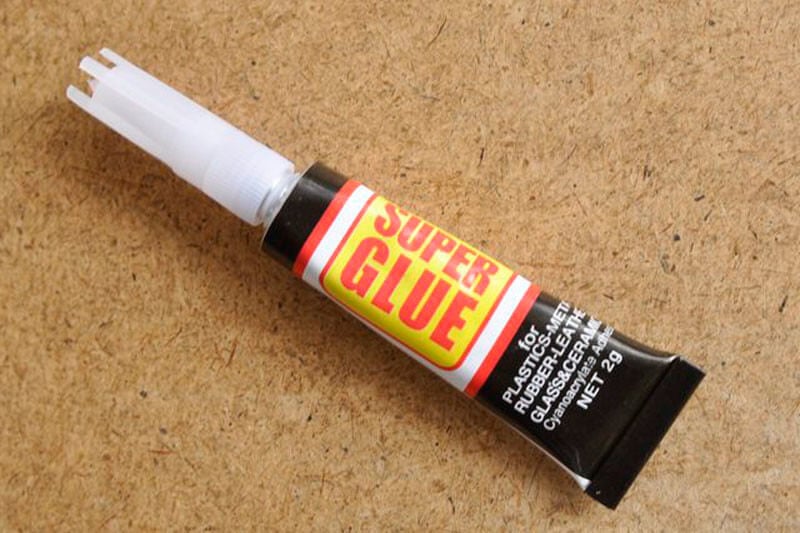
Когда в 1942 году американский химик Гарри Кувер создал вещество, которое позже будет названо «суперклеем», он на самом деле экспериментировал с новыми материалами для прицелов в боевом оружии. Однако вещество из-за излишней клейкости было забраковано.
В 1951 году американские исследователи во время поисков термостойкого покрытия для кабин истребителей случайно обнаружили свойство цианоакрилата прочно склеивать различные поверхности. В 1955 году разработка была запатентована, а в продажу поступила в 1959 году.
Суперклей долгое время присутствовал в различных американских ток-шоу, где выяснялись его все новые и новые потрясающие свойства.
Цианокрилатный клей мог склеивать любые поверхности, даже если они не были предварительно зачищены должным образом. Основная проблема этого клея состоит не в том, чтобы намертво склеить детали, а в том, чтобы их потом разъединить.
Ударопрочное стекло
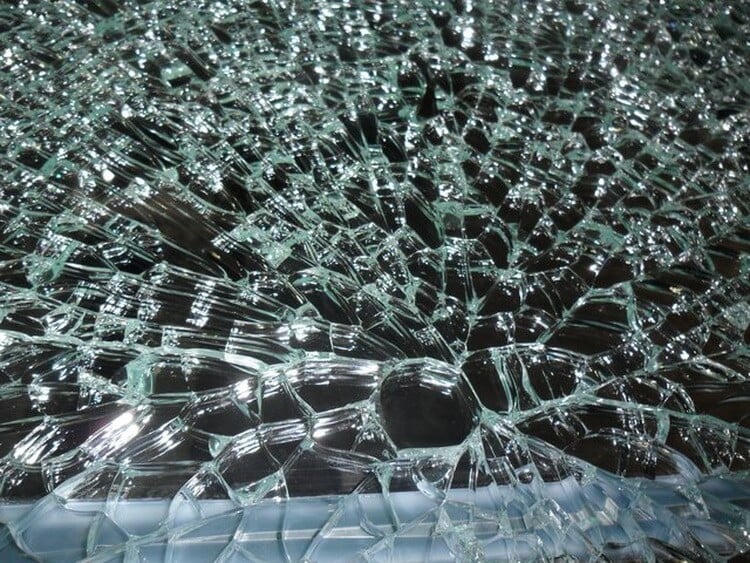
Небьющееся стекло широко используется в автомобильной промышленности и строительстве. Сегодня оно повсюду, но когда французский ученый Эдуард Бенедиктус в 1903 году случайно уронил на пол пустую стеклянную колбу и она не разбилась, он очень удивился.
Как оказалось, до этого в колбе хранился раствор коллодия, раствор испарился, но стенки сосуда остались покрыты его тонким слоем.
В то время во Франции интенсивно развивалось автомобилестроение, и ветровое стекло изготовляли из обычного стекла, что было причиной множества травм водителей, на что и обратил внимание Бенедиктус.
Он увидел реальную выгоду для спасения человеческих жизней в использовании его изобретения в автомобилях, но автомобилестроители посчитали его слишком дорогим для производства. Сейчас же оно используется повсеместно.
Вазелин
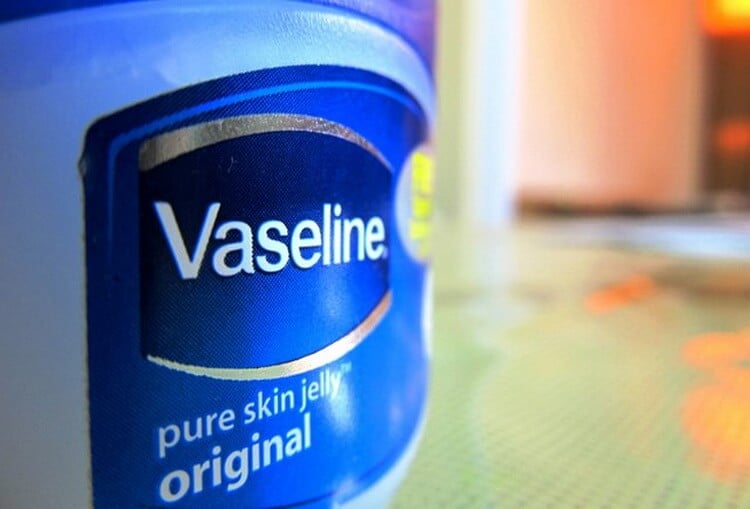
Название «вазелин» было запатентовано в США как торговая марка и торговый знак в 1878 году. Всем известное косметическое и лечебное средство изобрел и запатентовал эмигрировавший в Америку английский химик Роберт Чезбро. В этом изобретении ученому «помогли» нефтяники.
Когда в 1859 году начался нефтяной бум, Чезбро, общаясь с нефтяниками, заинтересовался липким нефтепродуктом – парафинообразной массой, которая при нефтедобыче налипала к бурильным установкам и забивала насосы. Он заметил, что рабочие постоянно используют эту массу при ожогах и порезах в качестве успешно заживляющего раны средства.
Ученый стал экспериментировать с массой и сумел выделить из нее полезные ингредиенты. Получившимся веществом он смазал свои многочисленные ожоги и шрамы, полученные во время опытов.
Эффект оказался поразительным. Раны зажили, причем довольно быстро. В дальнейшем поразительную ранозаживляющую способность этого вещества Чезбро продолжил совершенствовать и, пробуя на себе, наблюдал за результатом.
The article is based on materials .
- Get link
- X
- Other Apps
Comments
Post a Comment